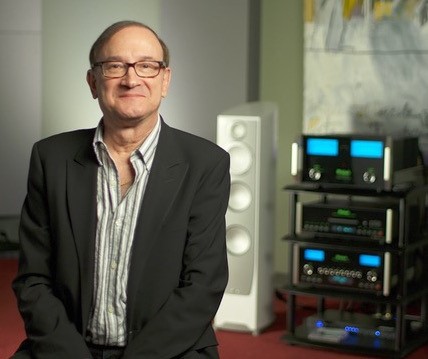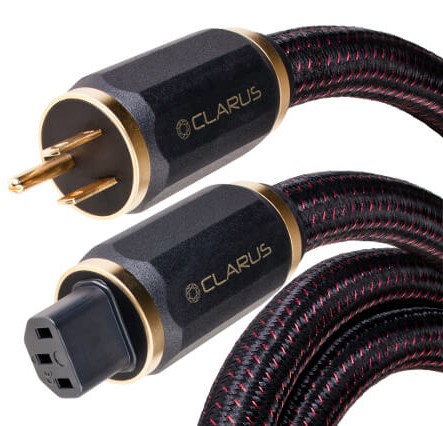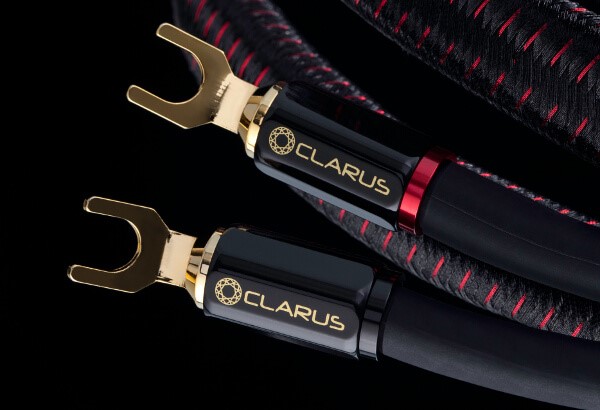ORLANDO, FL, July 9, 2018 — Clarus®, the high-end audio cable brand that is a “sister” company to Tributaries A/V cables, is introducing a nine part series of consumer-informational videos: “Interviews with Jay Victor Cable engineer” that explain, in a straightforward manner, the intricate processes that are behind the development of their Clarus Crimson and more-affordable Aqua cable lines. The nine videos in the series are viewable on YouTube by clicking here.
In each video, Jay Victor, renowned life-long audiophile, cable engineer musician, holder of 55 patents and the man behind the design of Clarus cables (and Tributaries cables since 2003), describes the application of both scientific principles and “Golden Ear”-based processes that were involved in the patented design of Clarus cables.
Example: it required three years of arduous development work before the first Clarus high-end cable was introduced on 2011.
According to Clarus president Joe Perfito, “To my knowledge, this is the first time that a manufacturer of high quality cables has clearly explained to the consumer, in understandable terminology, how the application of scientific principles and “Golden Ear” listening sessions have been applied to the development of a high-end audio cable line.
I believe the technology that Jay has developed makes Clarus Crimson and Clarus Aqua cable products unique in the high-end audio industry. And, the resulting performance is the major reason why Clarus dealers proudly stand behind the brand.”
- 01 Jay Victor, Audio Designer
- 02 History of Clarus Cables
- 03 Crimson vs Aqua
- 04 Clarus Patents
- 05 Clarus = Application Specific Design
- 06 Sonic Goals & Voicing the Clarus Cables
- 07 Listening Tests Determine the Best Materials for Clarus
- 08 Benefits of Using Clarus Power Cables With Conditioners
- 09 Clarus Power Cables Do Make a Sonic Difference
Jay Victor
Jay Victor explains: “I am a musician, and life-long music fanatic. My earliest childhood memories are of riding in my father’s car listening to music on the radio. I think this probably pre-conditioned me into being fixated on music. I took piano lessons at the age of 5, but eventually gravitated to electric guitar and then bass at around 13. I think my dad’s preference for pop music had its eventual impact, although a childhood spent watching Bugs Bunny cartoons gave me an acute appreciation for classical music. Then, playing Bass in High School Dance Band led me to Jazz. I used to sneak a transistor radio under my pillow so I could listen to AM Top 40 radio until late into the night. Many audiophiles tell this same story, so I think we all share a similar orientation.
“It was the late 60’s. It started with my parent’s Lafayette 70 watt vacuum tube receiver, Garrard turntable, and Lafayette Criterion speakers. I remember the sound as being vivid, very real, full, and dynamic. My Aunt & Uncle, whom we were close to, had Scott vacuum tube separates, a Fairchild turntable, and huge floor-standing Wharfedale speakers that were the size of small refrigerators. I remember it being a huge treat to visit, and I always brought an armload of records with me. Their family room was like a concert hall with huge dynamic contrasts and very real instrumental textures. My first girlfriend in high school had a father who was, ironically, an engineer and had a Fisher vacuum tube receiver, AR speakers and possibly an AR or Garrard turntable, I forget. He was always curious about my musical tastes and I always had to bring records over there to listen and compare notes. So, even at this stage, I was comparing reference recordings on different systems!
“Eventually the Hi-Fi world began to change. Everything was going to solid state, and I soon needed to acquire a system of my own. I went through various iterations of solid state equipment, and eventually had something that was more-or-less musically satisfying, but there were doubts. Somehow, the magic wasn’t quite all there, and despite the party line of Stereo Review and High Fidelity Magazines, I somehow sensed that all these perfectly measuring amplifiers did not, in fact, all sound the same. And similarity to real music? Getting farther away. How could this be? Could this be mass hysteria? Is everyone deluding themselves?
Clarus Crimson High Current Power Cable
“A pivotal event eventually took place. This was mid-1970’s approximately. By chance, a co-worker introduced me to an older friend, who happened to be an obsessed audiophile. Various listening sessions took place on his very-ambitious-for-the-day system, which happened to be solid state, and we became good friends. His system included a GAS Ampzilla amplifier and preamp, a massive Denon turntable and (the legendary) Dahlquist DQ-10 speakers. This friendship led to an invitation to go to a Hi-Fi show in New York (the first one, as it turned out) which proved to be a real revelation on many levels, but there was one key moment that is forever burned into my mind. In one room I happened to spot, of all things, a tube amplifier! In my mind, this was dead technology. I uttered in disbelief, the word ‘Tubes’??? My friend Jerry then responded, almost as an aside, with these words in a totally noncommittal, neutral, and unbiased tone: ‘Some people think that tubes sound better’. This, to me, was like a bolt of lightning, and struck a chord so deep, that I instinctively knew that this had the unmistakable ring of truth.
“Eventually, when finances permitted, I took the plunge and acquired a set of ‘modern-day’ tube amps, and the results were a revelation, compared to the typical solid-state gear of the time. The magic was back! The lesson learned was that something that may not necessarily have known measurable differences or advantages, be it solid-state or tube, could sound more like real music, and you should trust your ears. Newer technology isn’t necessarily better, although it can be. Nothing should be assumed or taken for granted, and this is how I approach my design work. I take chances, try different or unusual things, measure, and then listen, above all. You can’t always base things on existing formulas or conventions, and you sometimes need to start from scratch.
“In my case, as a cable designer, I started by listening to individual conductor gauges and materials. Every wire gauge sounds different! Then different dielectric materials and methods. Different materials sound different! Then different combinations of wire gauges. And on and on. Since there are almost unlimited combinations possible, this is very tedious and time consuming, but only by this means can you really optimize the designs and be sure you have the best possible combination. This is how my cables are designed.
Clarus Crimson Speaker Cable with Spades Terminations
"Extreme interest in music resulted in attending hundreds of live concerts, including subscriptions to Carnegie Hall, and I believe live music must be the ultimate reference standard. The main point of all of this is that if you spend a lifetime listening to, and playing music, it is difficult to avoid developing a sensitive ear. Also, being a technically-minded person, and an engineer, it is inevitable that Hi-Fi equipment would become a major preoccupation. If music is a major value in your life, then the realistic reproduction of it becomes an obsession. This is what goes into the cables that I design. A relentless pursuit of perfection in reproducing the sound of real music.”
Jay has a very impressive engineering resume, with decades experience of research and designing cables — first starting out with 12 years' intensive engineering work on scientific test instrument and X-Ray cables. Per Jay: "Employed as a Mechanical Design engineer in large Engineering departments alongside and working together with Electrical Engineering counterparts, who, as it turned out, were often audiophiles, this led to many unauthorized audio ‘side projects’, and also a very good electronics education on-the-job."
Later, in the audio realm he headed Monster Cables' design team for five years (which Jay considers "ancient history"...), and then consulted on design for a substantial number of well-known and well-regarded audiophile cable brands.
Since 2003 he has been the designer for Clarus' less expensive A/V cable brand Tributaries (both brands owned by Gordon J. Gow Technologies, LLC), and then became the exclusive designer for all Clarus products in the beginning of 2011.
Jay is also a part owner of a cable manufacturing factory in China — which gives him a unique advantage, besides integrity in the production. While a traditional order from a cable supplier is 3,000 to 5,000 meters, he is uniquely able to make very short runs of his many design prototypes for testing and evaluation.
And while the basic cable is manufactured to strict specifications in China, all Clarus cables are hand-terminated and tested in their state-of-the-art factory in Orlando, FL.
Shown is the building originally built for Clarus' sister company Tributaries A/V cables, and currently housing both brands






























